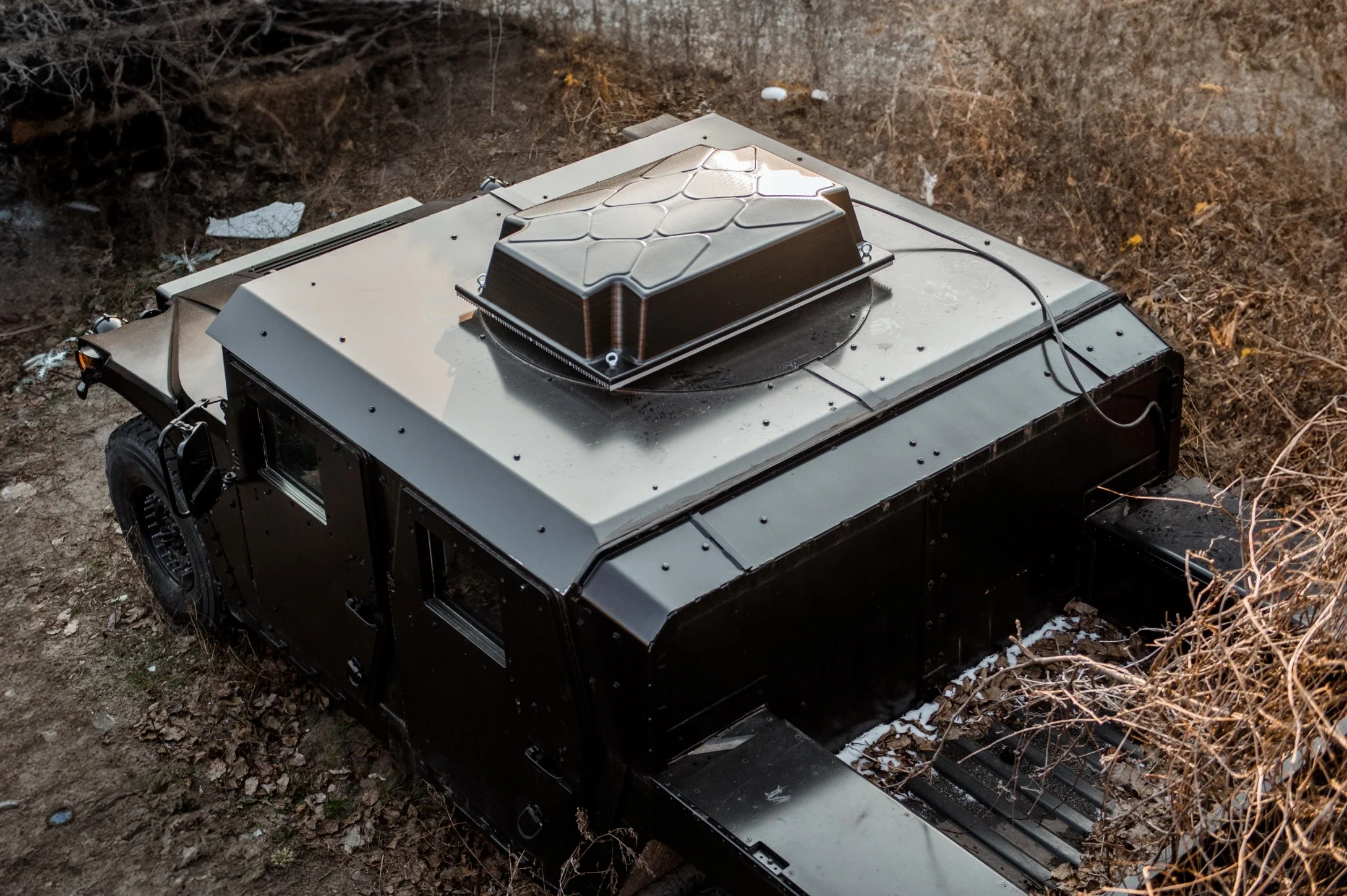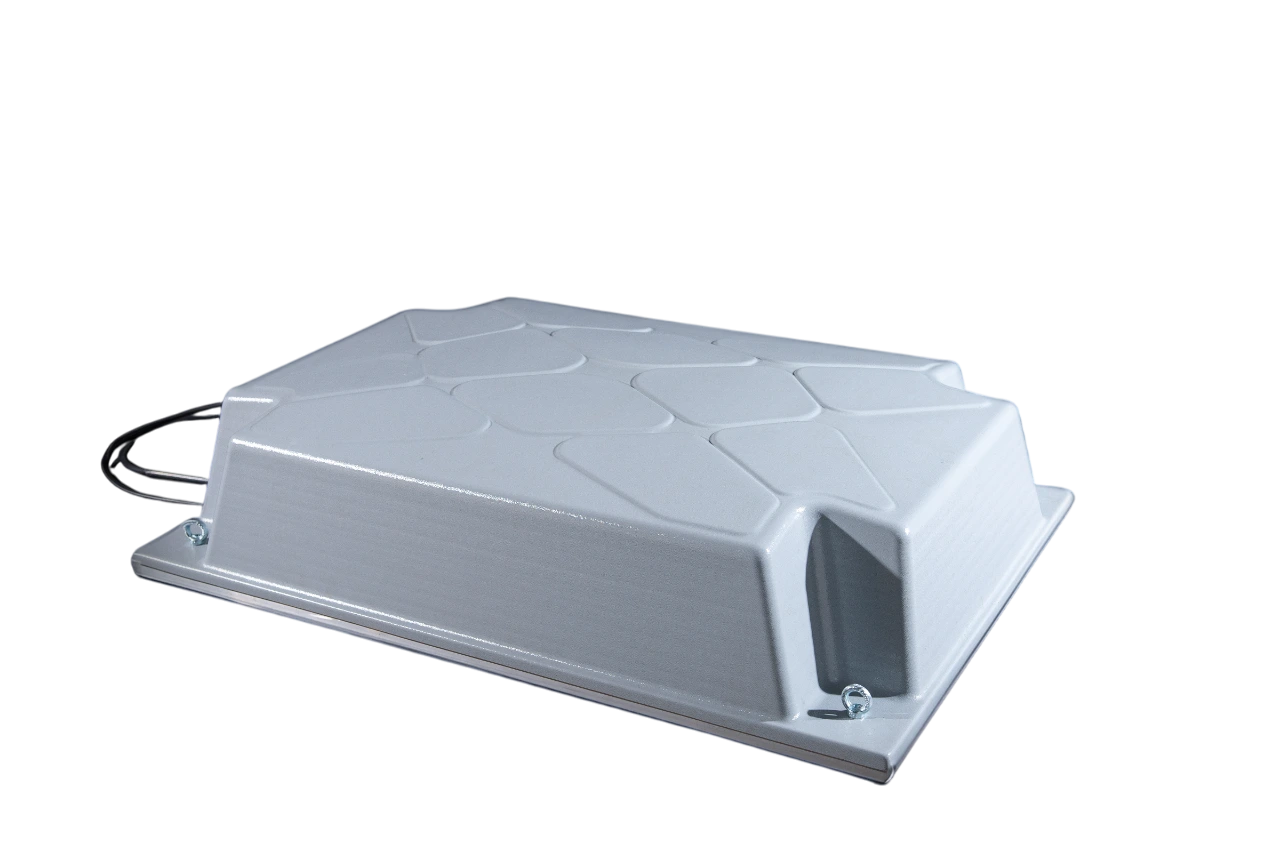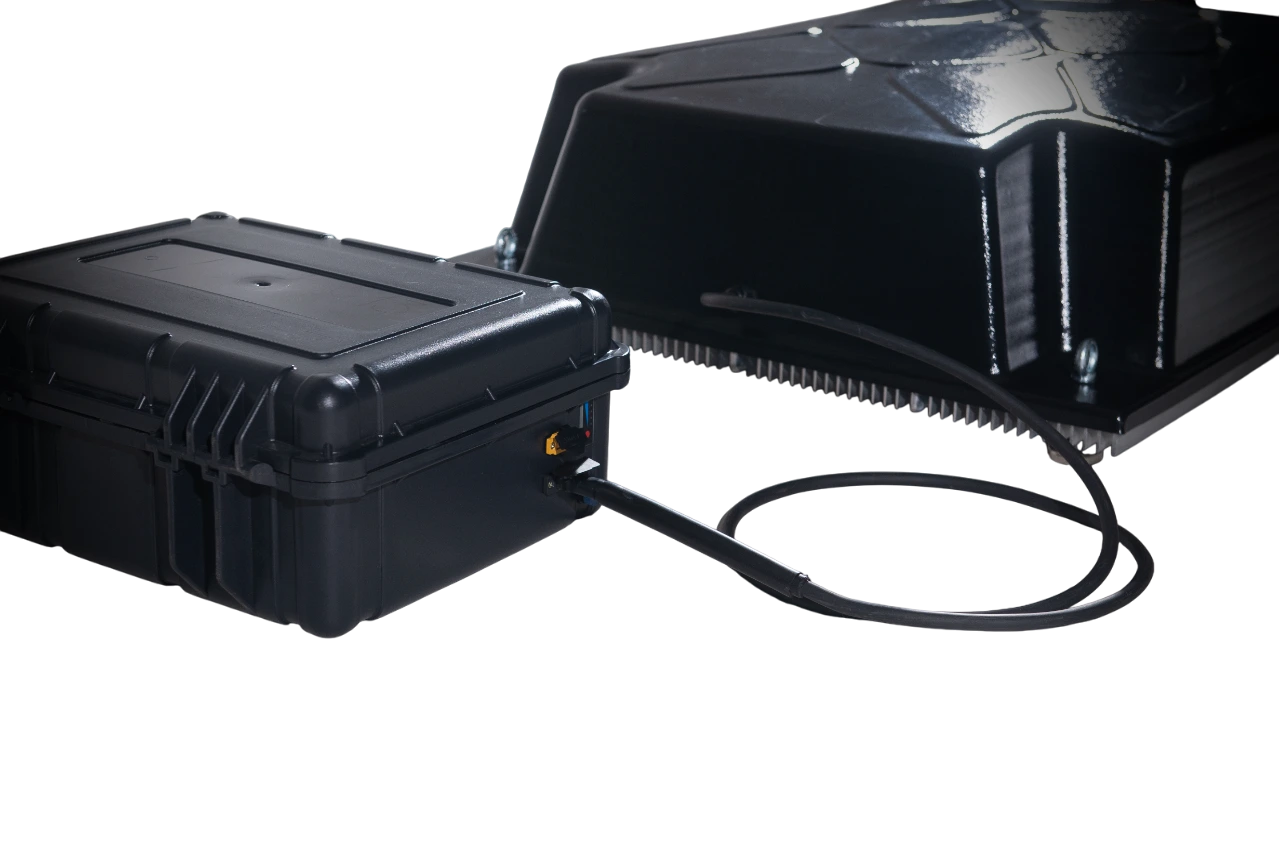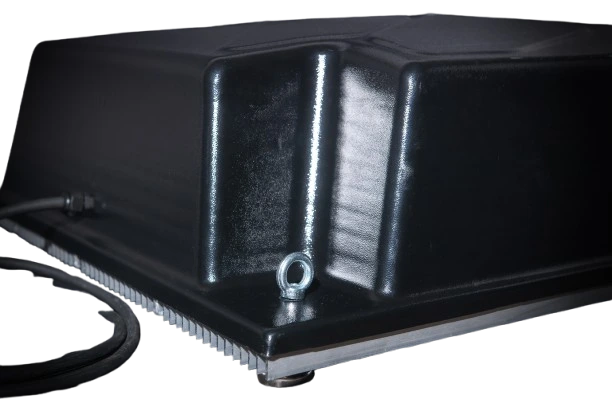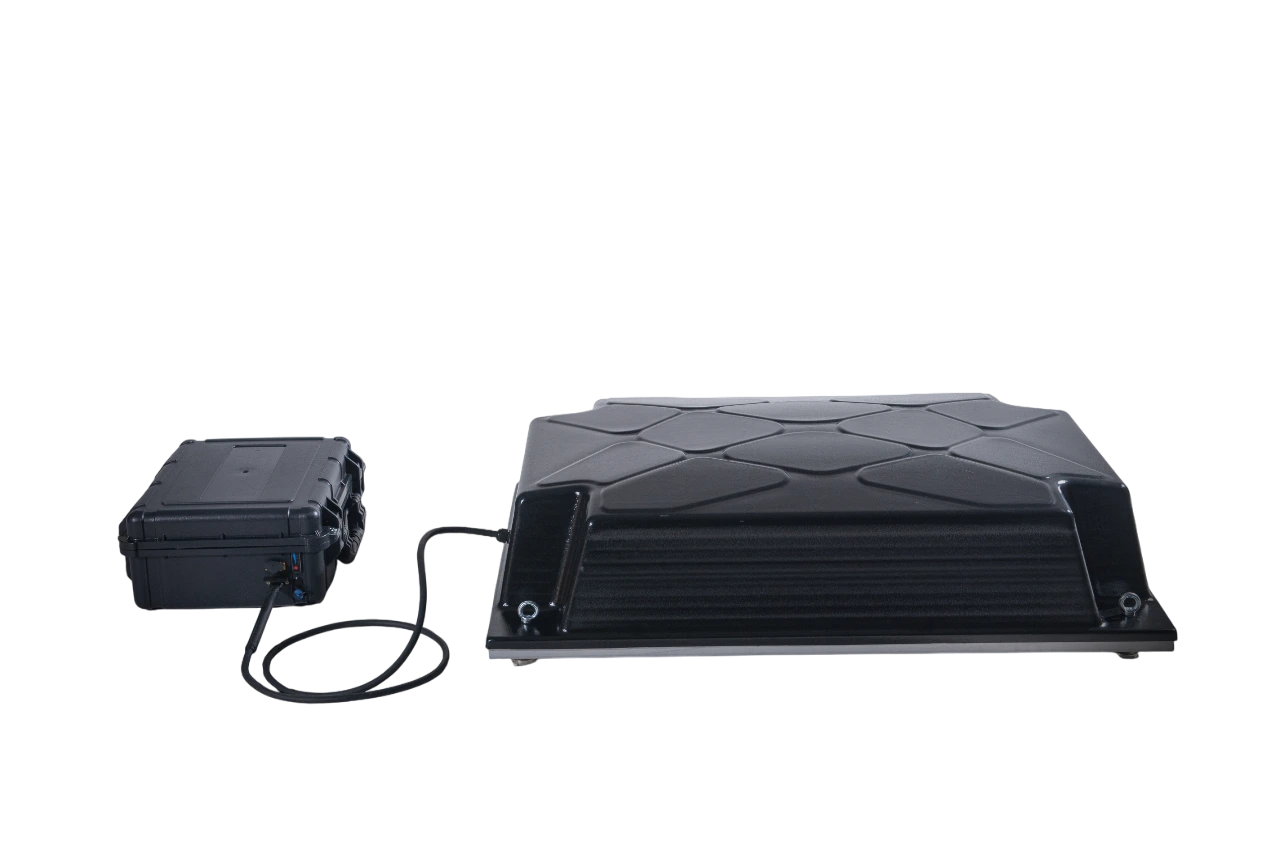In the context of modern hybrid warfare and the constant evolution of aerial reconnaissance tools, vehicle-mounted electronic warfare (EW) systems are no longer just an accessory — they are a vital tool for protecting equipment, personnel, and strategic assets from threats posed by drones and other radio-controlled systems.
What is Vehicle-Based Electronic Warfare (EW)?
Vehicle-based EW is a mobile signal-jamming system integrated into a vehicle. The primary function of such systems is to generate directional or omnidirectional radio interference that disrupts the operation of unmanned aerial vehicles (UAVs), such as FPV drones, quadcopters, and reconnaissance UAVs, as well as communication channels, GPS navigation, and tracking or targeting signals.
EW systems can be installed on a wide range of vehicles — from civilian cars to armored vehicles and specialized military transport. Their mobility allows rapid deployment and response to changing battlefield conditions, providing a high level of protection during movement, patrol missions, or while guarding strategic infrastructure.
Key Functions of Vehicle-Based EW Systems
Vehicle-mounted electronic warfare systems perform a broad spectrum of tasks aimed at securing personnel, equipment, and critical facilities. In the face of hybrid conflicts and widespread use of FPV drones, EW systems have become an essential component of modern military and law enforcement arsenals.
1. Drone Control Suppression
The core function of EW is to disrupt drone control channels. This is crucial in countering FPV drones used for reconnaissance, artillery targeting, or direct attacks on armored vehicles. The system generates a powerful jamming field that breaks the link between the drone and its operator, causing the UAV to lose control, land, or return to base.
2. Jamming Navigation Signals (GPS/GLONASS)
Effective jamming of satellite navigation signals disorients drones and precision-guided systems. This is critical in thwarting kamikaze drone strikes or guided munition attacks.
3. Blocking Telemetry and Video Feeds
The system blocks return data channels, depriving the drone operator of visual contact. This eliminates the ability to guide the drone accurately or control its payload.
4. Creating a Protective Radio Dome
EW forms a radio-frequency barrier around the vehicle or convoy, ensuring passive protection against radio-controlled threats. A roof-mounted jammer provides omnidirectional coverage — especially effective on high-risk routes.
Core Components of Vehicle-Based EW Systems
Every modern EW system designed for vehicle integration includes the following essential elements:
- Jamming Generator – Produces high-frequency suppression signals.
- Antenna Module – Directional or omnidirectional antennas to cover designated areas.
- Radio Analyzer – Scans the spectrum and detects potential threats.
- Control Unit – A touchscreen panel or remote control to adjust frequencies and operating modes.
- Cooling System – Maintains stable performance under heavy load.
- Vehicle Power Supply – Connects to the onboard battery (12/24 V).
- Portable Modules – Optional personal units to complement the main system.
Advantages of Vehicle-Based EW
- Mobility and Responsiveness – Rapid deployment and threat mitigation anywhere on the battlefield.
- Omnidirectional or Directional Protection – Operates in 360° mode or over distances of several kilometers.
- Vehicle Compatibility – Suitable for installation on SUVs, pickups, armored vehicles, and trucks.
- Autonomy and Low Power Consumption – Powered by the vehicle battery with optional backup supply.
- User-Friendly Interface – Touchscreen or remote controls for flexible configuration.
Where Are Vehicle EW Systems Used?
- Military Operations – Protection of convoys, checkpoints, field command posts, and armored units.
- Escort and Security Missions – Preventing drone attacks during transport of VIPs or critical cargo.
- Special and Humanitarian Missions – Ensuring safety during aid delivery, evacuations, or demining operations.
- Civilian and Security Agencies – Compact modules for VIP protection, facility security, warehouses, and logistics.
How to Choose the Right Vehicle EW System?
- Frequency Range – Choose systems that cover key frequencies (800 MHz, 1.2/2.4/5.8 GHz).
- Antenna Type – Omnidirectional for dome protection; directional for long-range jamming (up to 5 km).
- Operating Range – From 300–500 m in urban areas to 1,000–5,000 m in combat conditions.
- Vehicle Type and Mounting Method – Ensure compatibility with onboard networks, vehicle weight capacity, and options for concealed or external mounting.
- Operational Conditions – Protection from dust, moisture, impact, and overheating.
- Expandability and Integration – Ability to add antennas or integrate with surveillance systems.
Prices for Vehicle EW Systems in Ukraine
- Entry-level models – From 42,000 UAH (suitable for localized protection).
- Professional-grade systems – Up to 483,500 UAH (for Armed Forces and specialized units).
Why Choose Shield Systems for Vehicle EW?
- Trusted Manufacturers – We work exclusively with certified suppliers.
- Fast Nationwide Delivery – Across Ukraine: Kyiv, Lviv, Odesa, Kharkiv, Dnipro, Zaporizhzhia, Lutsk, Ternopil, and more.
- Expert Consultation – Our specialists will help select the optimal solution for your specific mission.
At Shield Systems, you’ll find a wide selection of both omnidirectional and directional EW systems — from civilian infrastructure protection to military convoy defense.
Contact us to select the right model or place your order online — we guarantee the best quality and prices in Ukraine.
